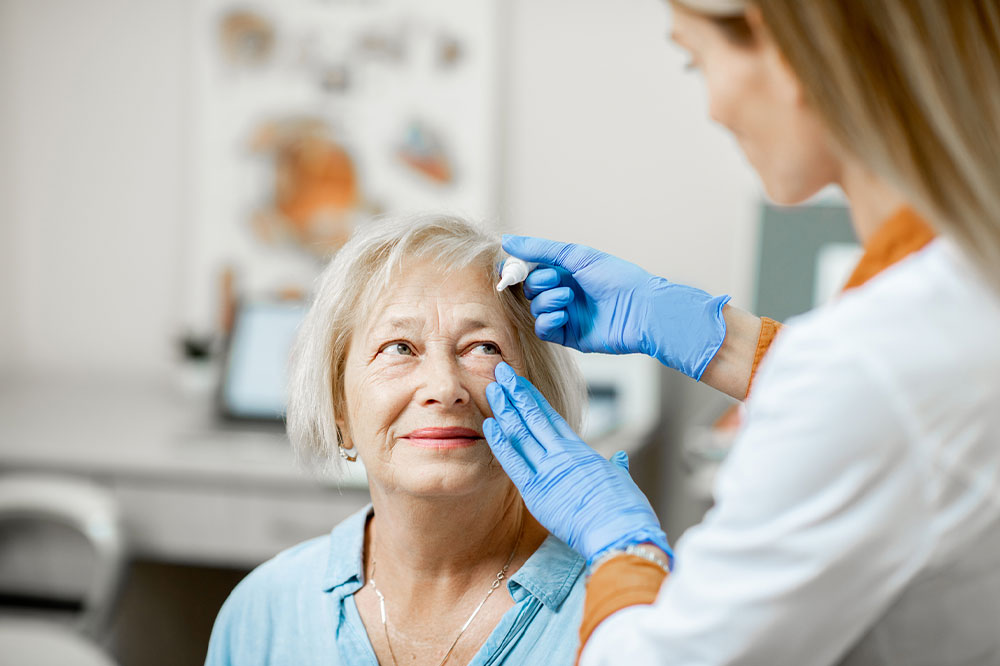Warning signs of poor eye health due to high sugar levels

This may not be widely known, but diabetes can also affect eye health when the blood sugar levels are very high in the body. The condition typically has many signs and symptoms that point toward deteriorating eye health; for example, high sugar levels can change the fluid levels in the eyes, cause swelling, or even damage tiny blood vessels. So, let’s look at some of the signs of poor eye health due to high sugar.
Blurry vision
If you are suddenly experiencing blurry vision, this may be likely due to the high sugar level in the blood. Blurry vision is usually a temporary problem and can be resolved by getting the glucose back to normal. The normal blood sugar should be between 70-130 mg/dL before meals and less than 180 mg/dL post meals. Once these numbers are under control, you can notice your blurry vision improving. It is said that it usually takes around 3 months of constant care and observation to fix the problem, so be consistent in your efforts, and you will see the results. Of course, always speak to your doctor to rule out any other causes for the blurry vision and ensure you are taking the right treatment.
Cataract
The eye has a natural internal lens that helps it focus and register the images it sees. If this lens starts to get foggy or cloudy, it usually means that a layer is formed to clog the vision. This blurry layer is called the cataract. While cataracts can develop at any age and to anyone, those with diabetes are at higher risk of developing this complication. Because the internal lens is blurry, it becomes difficult to see properly, and one can also experience a glare. The way to treat cataracts is to get surgery wherein this clouded lens is replaced by a clear, artificial lens called an intraocular lens. It becomes a permanent part of the eye. While this is not a complicated procedure, there are some people who cannot get this done due to other eye issues. Speaking to the doctor and getting clarity on the operations risks and side effects is necessary.
Glaucoma
This is referred to a group of eye illnesses that happen due to the damage caused to the optic nerve. Due to high sugar levels, the fluids in the eye cannot drain as they should; this creates swelling and pressure in the eye. Often this pressure leads to damage to nerves and blood vessels in the eye that causes blurry vision.
It is difficult to catch this symptom at an early stage unless you get regular eye checkups done; otherwise, it is usually detected once blurry vision is experienced. However, some treatment methods help in managing this condition. The doctors can help lower the pressure in the eye by helping speed up the fluid drainage causing the swelling. Some other symptoms experienced in other forms of glaucoma include frequent headaches, eye aches or pain, watery eyes, vision loss, or experiencing halos around lights. Another form of glaucoma to know of is neovascular glaucoma, common in those with diabetes. In this type of glaucoma, new blood vessels are formed on the iris, which is the colored part of the eye, and it can raise eye pressure. For early intervention, it is advised that you get an eye checkup done annually to be sure there are no complications.
Diabetic retinopathy
Diabetic retinopathy causes damage to the small blood vessels in the retina due to high blood sugar. The chances of developing this disease increase the longer you have diabetes; however, if you keep your blood sugar levels in check consistently, then it is possible to lower the chance of this illness. If neglected, diabetic retinopathy can even lead to vision loss.
There are three other types of retinopathy that you should be careful of, and this includes the following:
Background retinopathy
This condition occurs when the blood vessels are damaged, but there is no complete vision loss. However, it can get worse if the blood sugar remains ill-managed.
Maculopathy
Macula is the region behind the retina that helps in activities like reading, driving, and similar activities which require clear vision. When the swelling affects this region, it is called maculopathy and can be treated depending on how mild or severe the condition is.
Proliferative retinopathy
This condition occurs when the cells at the back of the eyes do not get enough oxygen, and there is new blood vessel growth in the area. This can cause clots, bleeding, and even scars, leading to vision loss.






